Picking an AV receiver (AVR) today is about balancing present needs with future-proofing. Whether you’re wiring a dedicated home theater or upgrading a living-room system, the right AVR keeps your movies, games, and music sounding and looking their best for years. Below I’ll Walk through the practical specs you should compare — power, HDMI, HDMI eARC, surround formats, channel/output flexibility, streaming, and stereo upmix — and explain why the AmpVortex-16060A is a strong, well-rounded recommendation.
AmpVortex-16060A: https://www.ampvortex.com/product/ampvortex-16060a/

1) Power: what the numbers really mean
RMS vs. peak: Look for continuous (RMS) power per channel at a realistic impedance (e.g., 8Ω or 6Ω) rather than marketing peak wattage. RMS tells you how loud and clean your AVR can play for extended periods.
Headroom and real-world performance: An AVR with slightly higher continuous power and good current delivery will sound cleaner at high dynamic passages (explosions, big orchestral hits).
Matching speakers: Check your speaker sensitivity (dB/W/m). Low-sensitivity speakers need more power for the same loudness.
Why it matters for music and movies: For dynamic soundtracks, reserve headroom reduces clipping and distortion. For long listening sessions (music) you want stable, low-noise power delivery.
AmpVortex-16060A advantage: engineered power stage with generous continuous output and conservative ratings so what’s printed is what you’ll actually hear — clean, controlled, and reliable at higher listening levels.
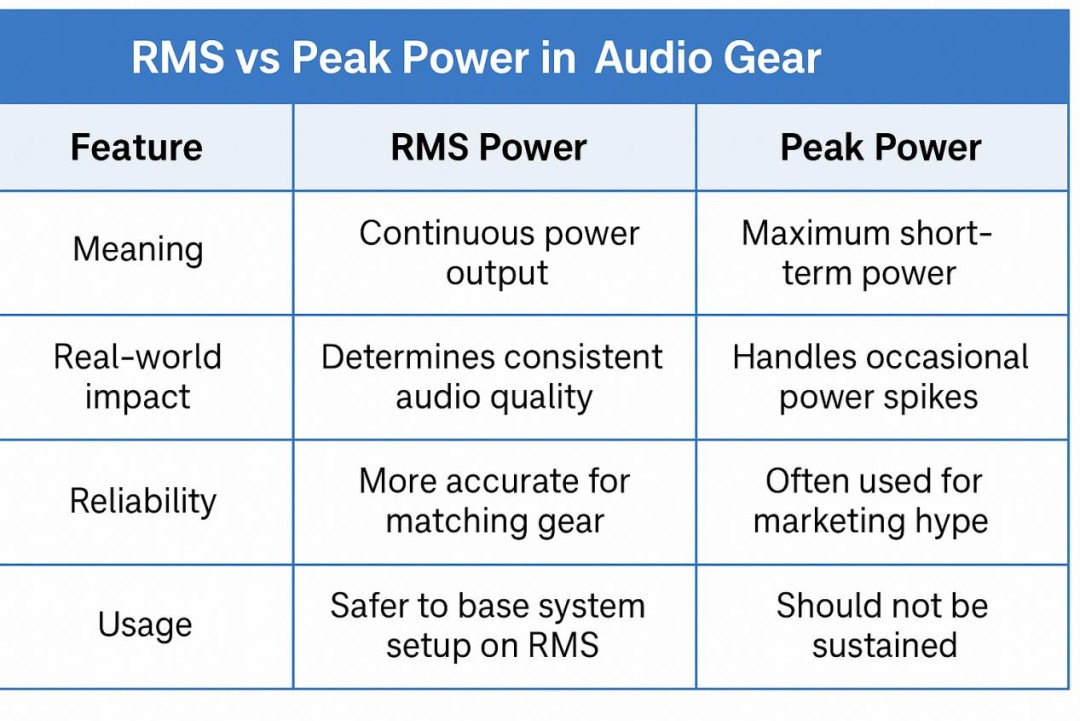
2) HDMI inputs/outputs & video pass-through (2K/4K/8K)
Input count: Match the number of HDMI sources you own (console, Blu-ray, streamer, cable box) plus future devices. 6–8 inputs are common for serious systems.
HDMI version & bandwidth: For HDR, high frame rates, and next-gen consoles, prefer HDMI 2.1 or at least HDMI 2.0b with select 2.1 features. If you want 4K120 or 8K60 passthrough, confirm the AVR explicitly supports it.
HDCP & gaming features: Look for HDCP 2.3, low-latency passthrough, ALLM, and VRR support if you game.
Future-proofing: If you expect to upgrade to 8K sources or want 4K120 support for new consoles, buy an AVR that supports those specs today.
AmpVortex-16060A advantage: plentiful HDMI ports with modern HDMI spec support and clean video switching so your TV/projector always receives the best possible image without signal issues.
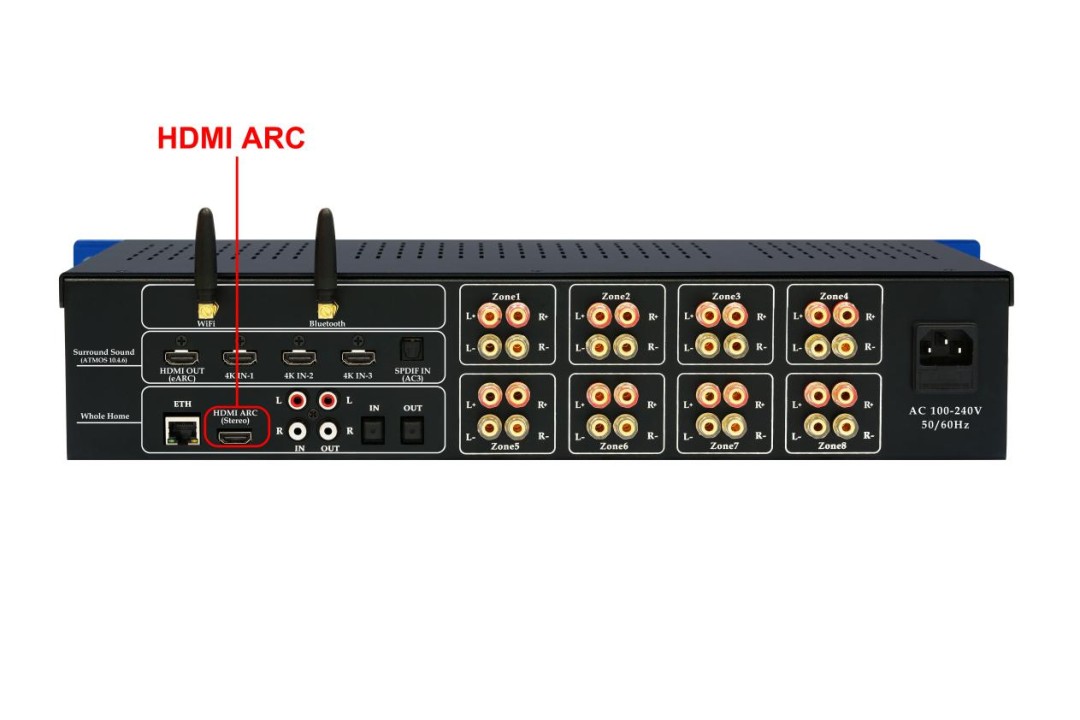
3) HDMI eARC — don’t skip it
Why eARC matters: HDMI eARC (enhanced Audio Return Channel) lets your TV send full-resolution audio (Dolby Atmos, Dolby TrueHD, DTS-HD MA) back to the AVR over HDMI.
Check compatibility: Ensure both your TV and AVR support HDMI eARC. Some TVs only support basic ARC which is limited to compressed formats.
Latency and lip-sync: Look for automatic lip-sync correction features when using HDMI eARC.
AmpVortex-16060A advantage: robust HDMI eARC implementation so streaming from TV apps and next-gen consoles integrates smoothly into your audio chain.
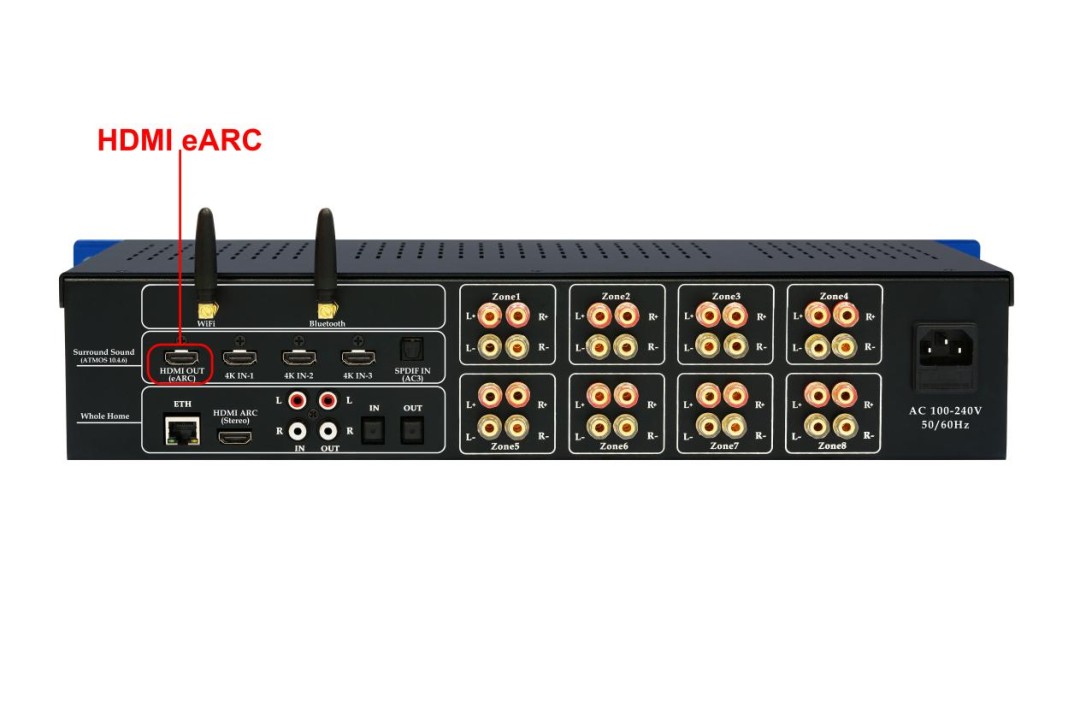
4) Surround format support (Atmos, DTS, etc.)
Major formats: Dolby Atmos, HOLOSOUND, and legacy Dolby Digital compatibility.
Object-based audio: Atmos and DTS:X provide object-based sound that can be mapped to ceiling or upward-firing speakers.
Decoder updates: AVRs with firmware updates can add or refine support for new codecs.
AmpVortex-16060A advantage: full support for object-based formats plus software updates to keep formats current.
5) Output formats & channel flexibility (5.1, 7.1, 7.1.4, 10.x.y)
Know your room & speaker plan: Common configurations include 5.1, 7.1, 5.1.2 (two overhead), and 7.1.4 (four overhead).
Pre-outs & amp channels: If you plan large setups (e.g., 7.1.4) either choose an AVR with built-in channels or pre-outs to add external amps.
Height and wide channels: Some AVR models let you reassign channels (e.g., use rear amps for height channels).
AmpVortex-16060A advantage: flexible channel mapping and ample pre-outs make growth easy — start smaller and expand without replacing the core unit.
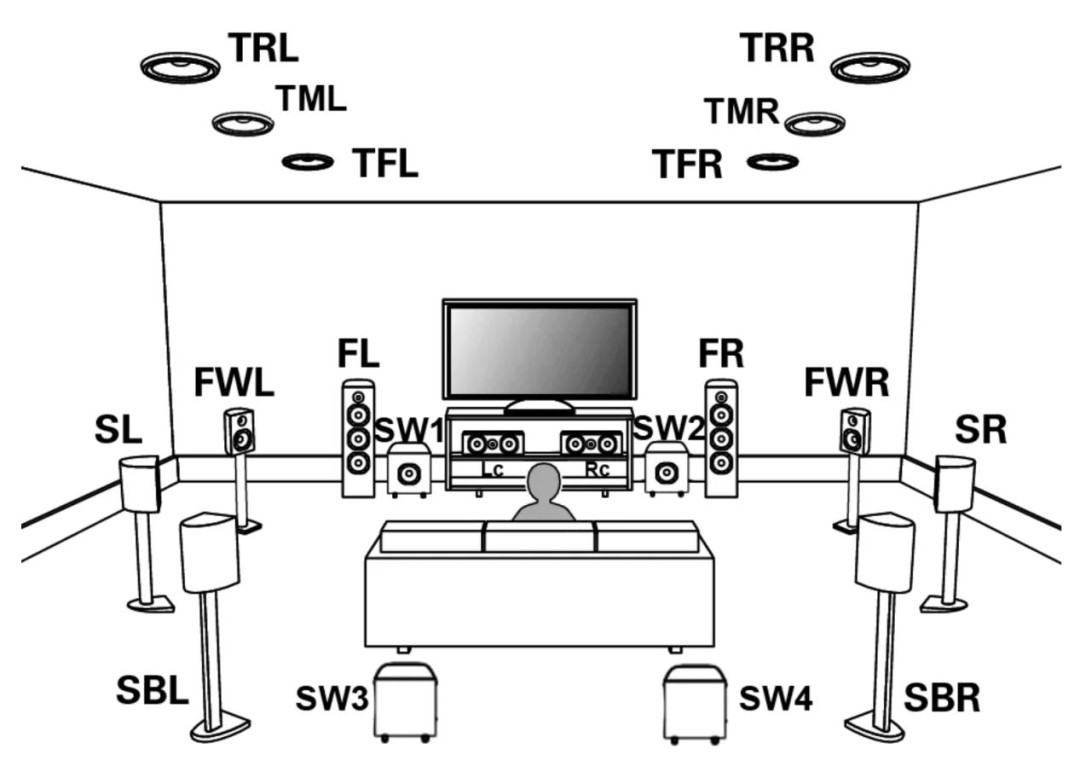
6) Streaming support (AirPlay 2, Spotify Connect, Qobuz, etc.)
Integrated streaming: Built-in AirPlay 2, Spotify Connect, TIDAL/Qobuz support, and Chromecast or Roon readiness eliminate the need for separate streamers.
Multi-room: If you want whole-home music, look for multiroom capability and synchronous playback across zones.
Network stability: Wi-Fi and wired Ethernet support matters for high-resolution streaming.
AmpVortex-16060A advantage: native streaming stack with broad service support and multi-zone streaming capabilities — great for someone who values both home theater and high-quality music playback.
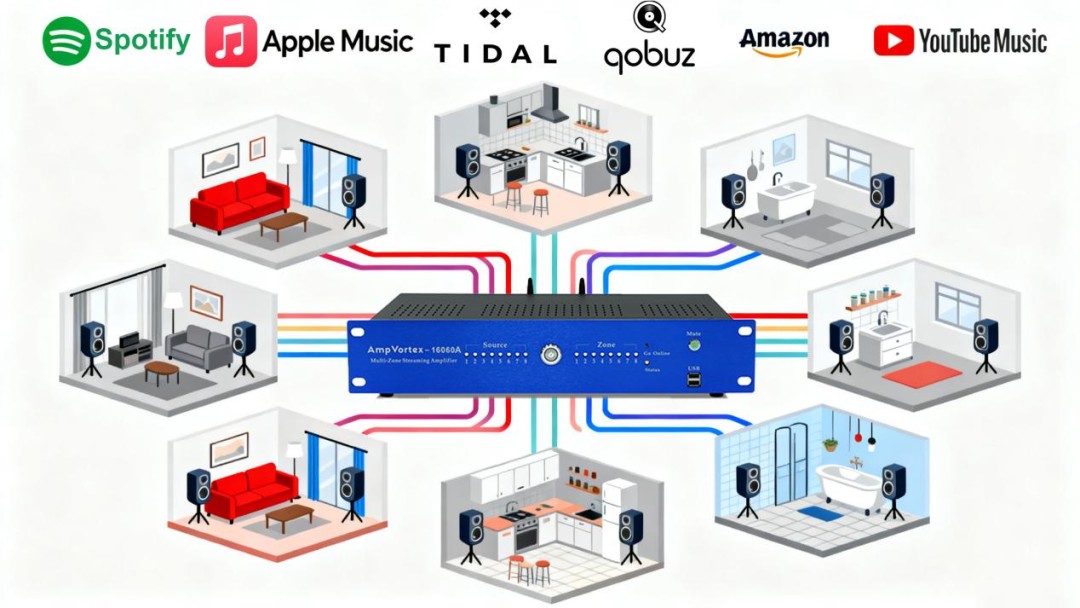
7) Stereo upmixing & music-first features
Stereo upmix: Look for Dolby Surround, DTS Neural:X, or proprietary stereo upmixers that expand stereo to multi-channels while preserving tonal balance.
High-quality DACs & room correction: For music lovers, the AVR’s DAC quality and room calibration (Dirac/Loudspeaker EQ) have a major effect on tonal accuracy.
Two-channel fidelity: Some AVRs include a “pure/direct” mode that bypasses processing for stereo listening.
AmpVortex-16060A advantage: advanced stereo upmix options and high-quality analog/digital stages that keep music natural and detailed — not just loud.
Quick buying checklist
RMS power per channel at 8Ω (and at 6Ω if provided)
HDMI inputs count + support for 4K120 / 8K60 if you need it
eARC on HDMI output
Dolby Atmos / DTS:X support and update policy
Channel count vs. pre-outs (expandability)
Native streaming services you use (AirPlay2, Spotify, Qobuz, Chromecast, Roon)
Stereo upmix capability + room-correction system
Firmware update track record & manufacturer support
Bottom line — why consider the AmpVortex-16060A
If you want an AVR that balances real-world power, modern HDMI/HDMI eARC features, full object-based surround support, flexible channel expansion, and serious streaming & multiroom capability, the AmpVortex-16060A is a standout choice. It’s designed for both the movie enthusiast who demands immersive Atmos performance and the music lover who wants pristine stereo and seamless streaming. In short: future-proofed connectivity, honest power delivery, excellent music handling, and multi-zone streaming make AmpVortex-16060A a smart long-term purchase.
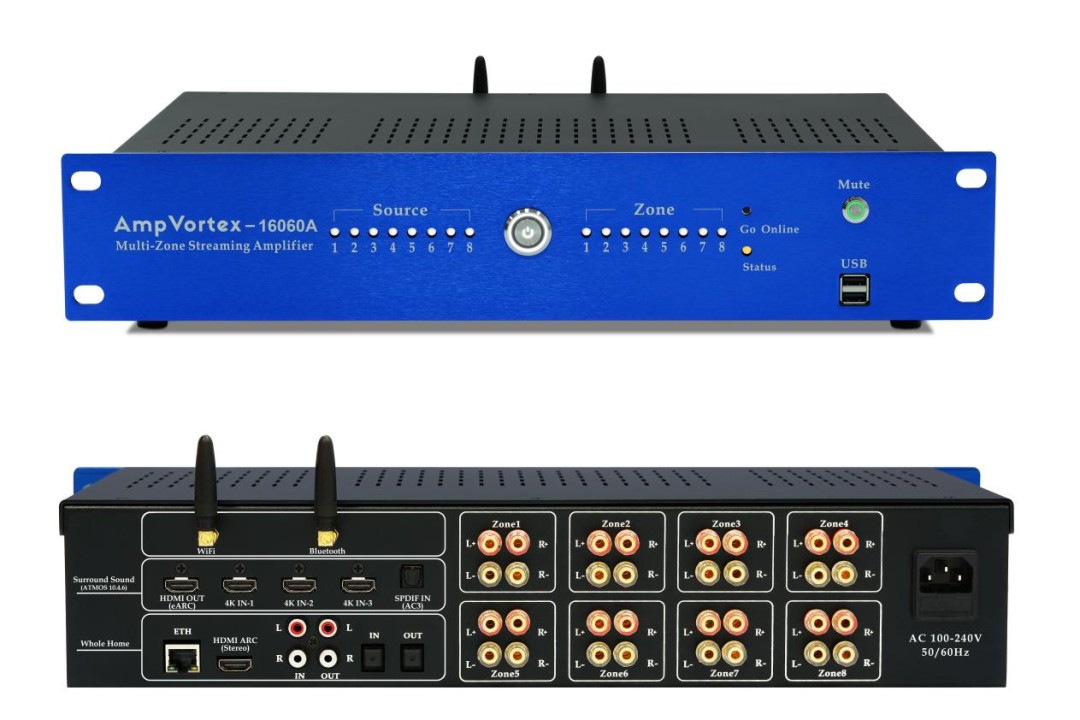
Availability and Further Information
For more information AmpVortex products, please visit www.ampvortex.com or contact our sales team at service@ampvortex.com.
About AmpVortex
AmpVortex was founded in 2013, initially focusing on technology for the film industry with the aim of delivering cinematic audio experiences to every home. In 2018, the company began developing Whole Home Audio Solutions and released its first AirPlay 2-enabled streaming amplifier in 2019. Since then, AmpVortex has continuously enhanced its products, including upgrading from 4x AirPlay 2 to 8x AirPlay2. In 2024, the company partnered with Google to introduce Google Cast functionality, launching with 8x Google Cast support. In 2025, AmpVortex teamed up with Dolby and others to launch the -A version (AmpVortex-16060A), supporting a 9.1.6 configuration. This makes AmpVortex the only product in the world to bridge the gap between Whole Home Audio and Surround Sound.
Our patents cover a range of technologies including multi-zone amplifiers, modern amplifier heat management, smart home control, voice control, smart routing, smart mixing, and more.
Our team is composed of world-class experts from diverse technical fields, with a strong focus on audio processing. We continuously push the boundaries of innovation, ensuring that our solutions not only meet but exceed the expectations of our users. With a relentless commitment to excellence, we aim to redefine the audio experience for global consumers, delivering cutting-edge technology and seamless integration across home and commercial environments. At AmpVortex, we don’t just create products – we create immersive, transformative experiences that enhance the way people live and interact with sound.
Media Contact
Company Name: Ampvortex
Contact Person: Rary
Email: Send Email
City: Denver
Country: United States
Website: www.ampvortex.com






